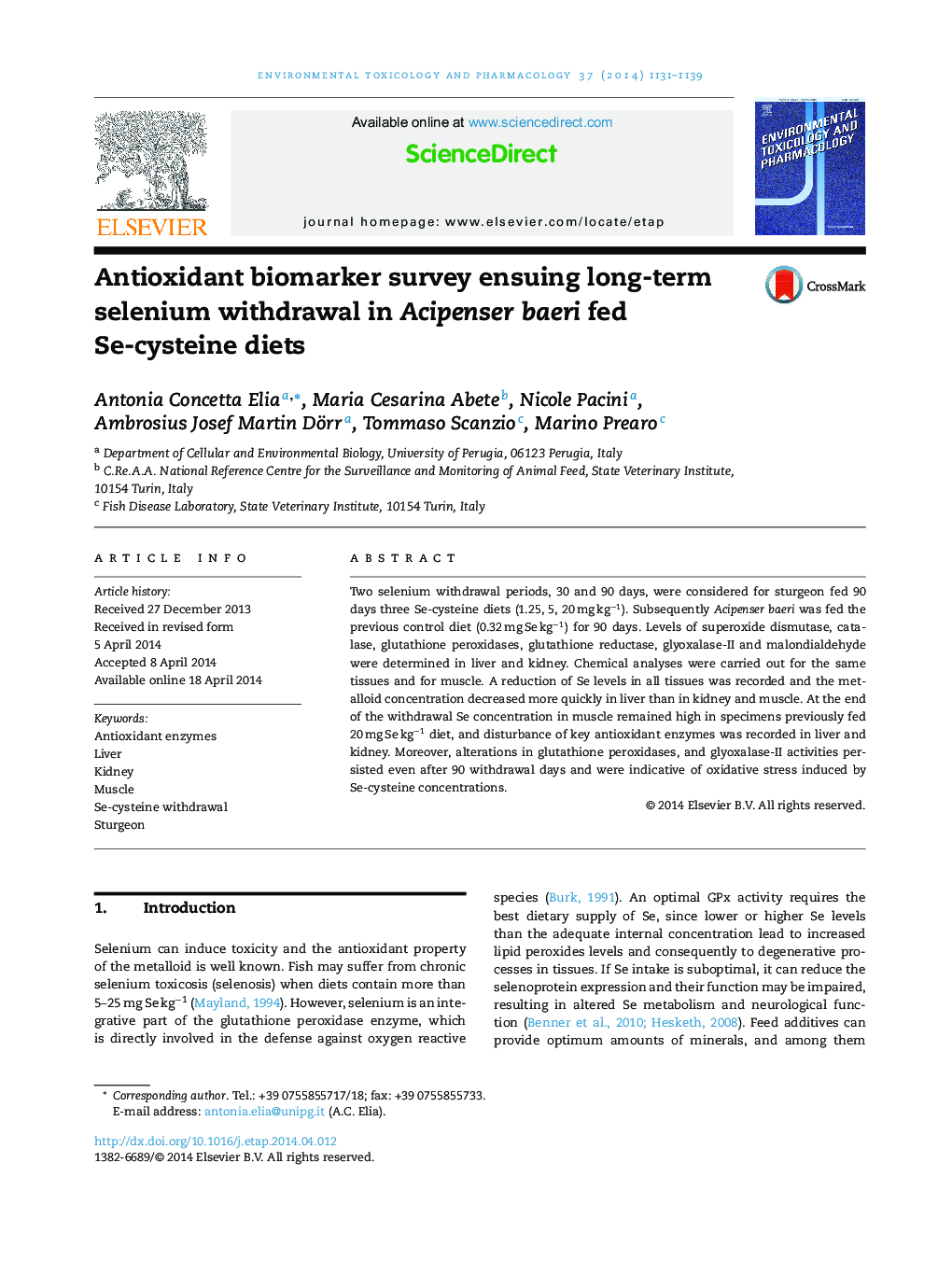| Article ID | Journal | Published Year | Pages | File Type |
|---|---|---|---|---|
| 5849129 | Environmental Toxicology and Pharmacology | 2014 | 9 Pages |
Abstract
Two selenium withdrawal periods, 30 and 90 days, were considered for sturgeon fed 90 days three Se-cysteine diets (1.25, 5, 20 mg kgâ1). Subsequently Acipenser baeri was fed the previous control diet (0.32 mg Se kgâ1) for 90 days. Levels of superoxide dismutase, catalase, glutathione peroxidases, glutathione reductase, glyoxalase-II and malondialdehyde were determined in liver and kidney. Chemical analyses were carried out for the same tissues and for muscle. A reduction of Se levels in all tissues was recorded and the metalloid concentration decreased more quickly in liver than in kidney and muscle. At the end of the withdrawal Se concentration in muscle remained high in specimens previously fed 20 mg Se kgâ1 diet, and disturbance of key antioxidant enzymes was recorded in liver and kidney. Moreover, alterations in glutathione peroxidases, and glyoxalase-II activities persisted even after 90 withdrawal days and were indicative of oxidative stress induced by Se-cysteine concentrations.
Related Topics
Life Sciences
Environmental Science
Health, Toxicology and Mutagenesis
Authors
Antonia Concetta Elia, Maria Cesarina Abete, Nicole Pacini, Ambrosius Josef Martin Dörr, Tommaso Scanzio, Marino Prearo,
